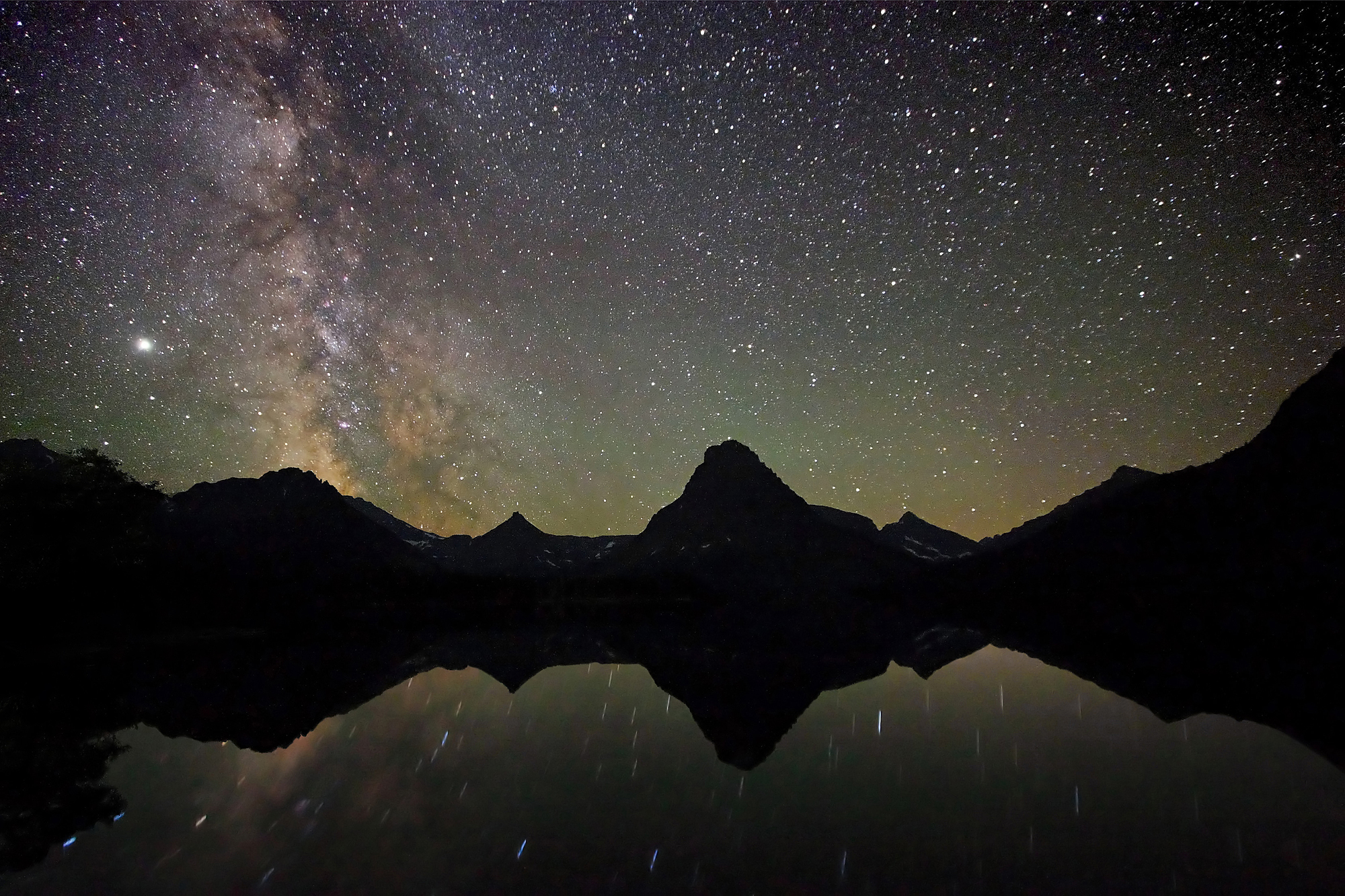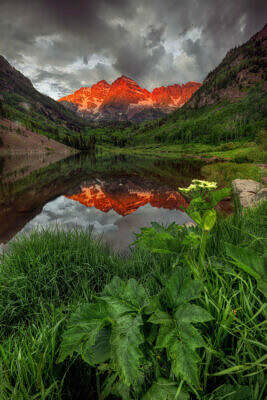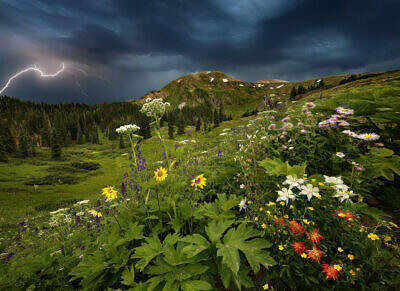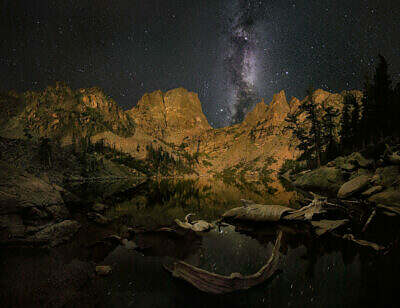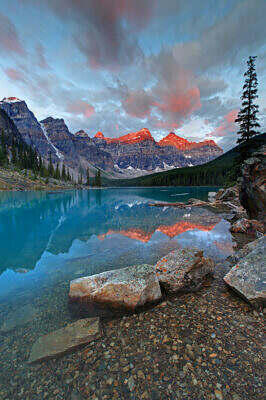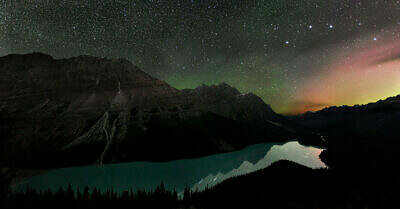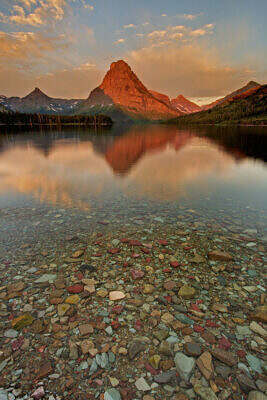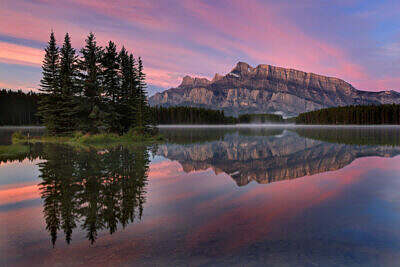The Milky Way rises with Jupiter over Sinopah Mountain in Waterton Glacier and is reflected in Two Medicine Lake.
A night out in the blackness of the new moon is an awe-inspiring experience. The grandeur of the Milky Way, the sublimity of the landscape, the chilly temperatures and the presence of wildlife are intoxicating. Deep feelings of humility mix with euphoria and fear and captivate the senses.
-
The Milky Way over Two Medicine Lake in Waterton Glacier
Patterns in the Void
- Only a Memory Remains
- Oh Be Joyful
- The Wild Embracing Silence
- Valley of the Ten Peaks
- Above and Beyond
- Ancient Shorelines
- Moments to Remember
- Grand Teton Skyline

